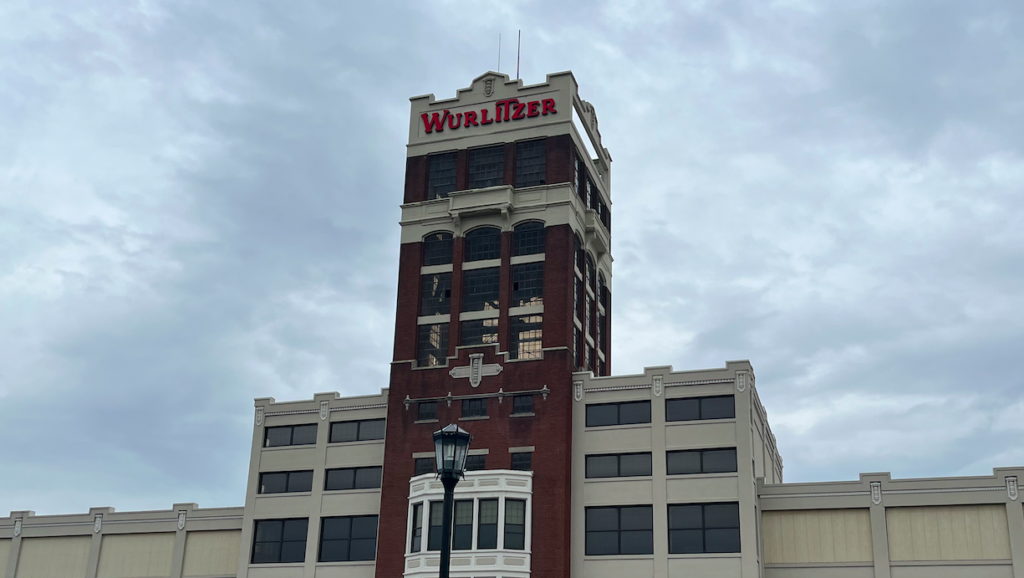Back in 1974, the once-leading brand of jukebox manufacturers pulled the plug on production when its yearly yield fell to only 1,600 units made. Their iconic factory in North Tonawanda, N.Y., however, has since been repurposed into a retail and event center (e.g. weddings). With Niagara Falls nearby, “The Wurlitzer Building” has become a popular place to meet and greet, especially for folks who live in that part of the world.

The building was originally bought by the Wurlitzer family in 1908 from the North Tonawanda Barrel Organ Company. The Wurlitzer Co. itself was best known in its earliest days as a manufacturer of player pianos, band instruments and organs (like the Mighty Wurlitzer theater organs still in use at some large public locations).
Jukeboxes came along later in 1933 when founder Rudolph Wurlitzer’s son Farney cut a deal with Packard Jukebox’s Homer Capehart; their very first box was a 78rpm unit called the Debutante. By 1937, Wurlitzer reportedly had sold over 100,000 units of that and successive models, thanks in large part to the repeal of Prohibition.
Later, after the end of World War II, their most famous machine came with the Model 1015 which was recently enshrined in the AAMA’s new Hall of Fame. This round-top “bubbler” was the one that most people think a typical jukebox looked like in its glory days. Many an operator from that period has wished he’d held onto his boxes rather than junked them.
Today’s repurposed building, with its familiar tower, houses retail stores, office space, areas for big and small social and business events, Platters Chocolates and the Woodcock Brothers Brewery. Much of its interior features exposed ceiling duct work reminding visitors that the Mighty Wurlitzer organ (and may we say mighty fine jukebox line) were once built not that far from the coffee and pastry shop they’re enjoying today.
